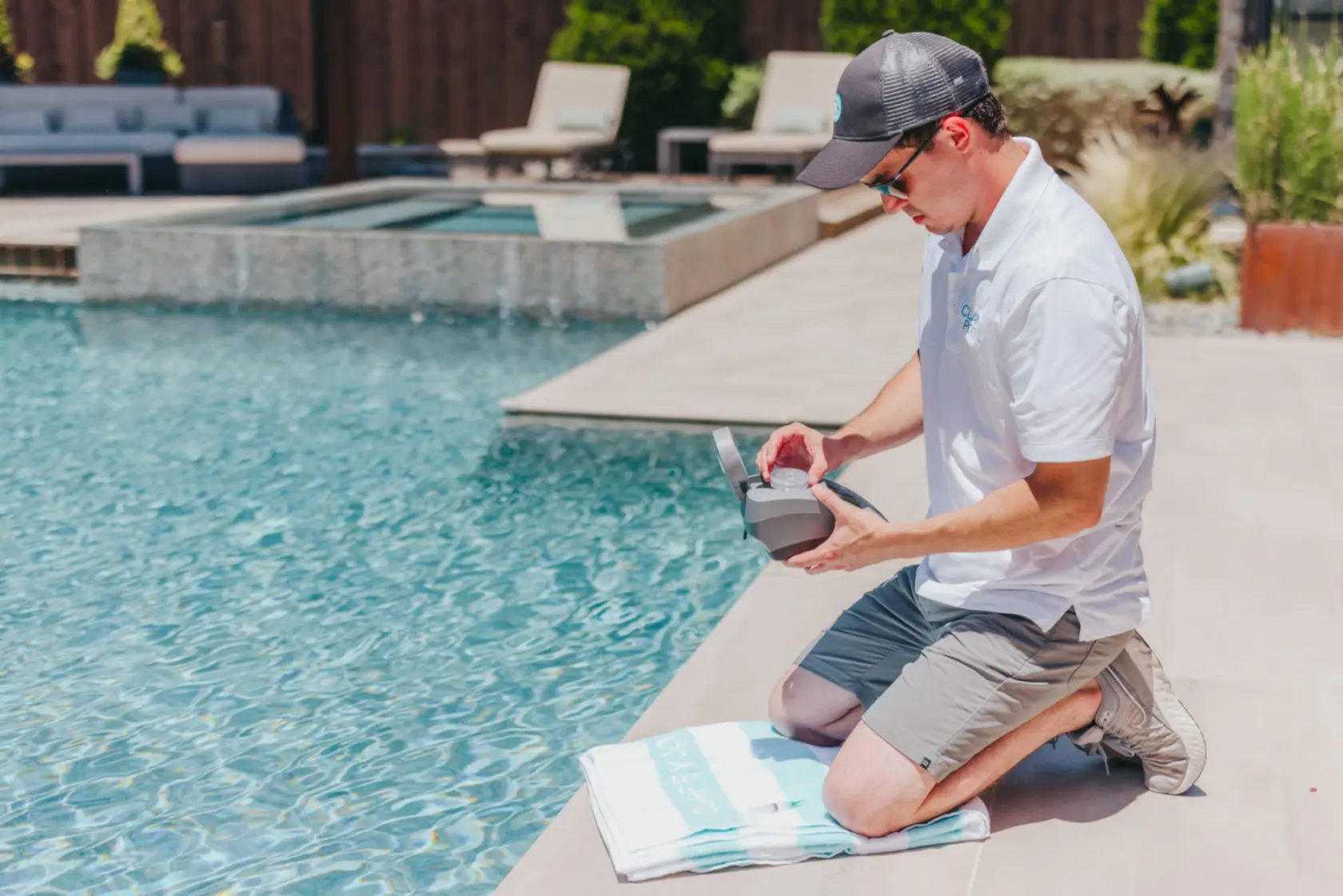How to Open Your Swimming Pool for Spring
Reading Time: 4 minutes
With winter finally behind us and our sights set firmly on the warmer weather in spring and summer, pool season has well and truly returned.
For many pool owners, spring is the time to start thinking about getting back in the water – but before you dive right in, it’s important that you open your pool correctly.
But there’s no need to worry, the process of getting your pool ready is fairly straightforward, and the team here at Claffey Pools has put together a handy step-by-step guide so you can get back to enjoying your pool in no time.
Remove debris and clean the pool’s surroundings
First, take a moment to survey your pool’s surroundings. Over the course of the winter, it’s likely that nearby plants such as hedges and trees could have become slightly overgrown and are encroaching on your pool. Give them a trim, and also check that the decking surrounding your pool hasn’t become damaged.
It’s also worthwhile checking your pool’s equipment such as safety rails, slides, diving boards and the like for any damage and if necessary ensure they’ve been fixed before anyone uses them.
Finally, give the area a good sweep to remove any debris or leaves that have accumulated over the winter months.
Remove pool cover
Next, it’s time to remove your pool’s winter cover and see what condition the pool itself is in. The cover itself has probably become dirty, so we’d always recommend wiping or hosing it down, and leaving it to dry.
If any debris or dirt has gathered in your pool, use a net or brush to scoop it out.
Inspect the pool
Now, you can inspect the actual interior of your pool. There are a number of things you should be looking out for. These include:
- Checking for any interior pool damage or wear and tear that’s occurred over the winter – make sure to repair any issues you come across
- Keep an eye out for cracked tiles – these can cut people if not properly dealt with
- Remove any stains or calcium buildup in the pool. It’s important to use appropriate stain lift products for this – check with your local pool professionals if you’re unsure
- If you placed any drain plugs or winterizing plugs in your pool, take them out and replace them with their original fittings. Now is also a good time to reattach any pool lights you may have removed for winter
- Check your pool’s pumps and filters for any damage and replace them if necessary
Raise water
Now it’s time to add some water to the pool. Typically, you should have drained some of the water away when winter arrived (for future reference, it’s important to leave at least some water in the pool) and now is the time to get the water back to its usual level.
To do this, you can simply grab a hosepipe and fill the pool until it reaches the midpoint of the waterline tile. At this point, you may notice some leaves, twigs or debris that you missed earlier have floated up that you can remove with your pool net.
Don’t worry about just using a hosepipe to fill the pool, we’re going to address the water quality in the next step.
Test the water
Testing your pool’s water is probably the most important step of the entire process, as it ensures the water is safe for people to swim in.
Typically, you can use testing strips to test your water’s chemistry, and therefore quality; but if you’d prefer a more in-depth test, then simply take a sample of your pool’s water to your nearest pool professional.
One of the main things a testing strip will look at is your water’s pH levels. This will tell you how acidic and alkaline your water is. If it’s too acidic, it’s likely to corrode equipment, damage the pool’s surfaces and cause irritation to the eyes, skin and noses of swimmers. Conversely, if it’s too alkaline, you’ll notice scaling in the pool and your water could become cloudy. Plus, it can interfere with your pool’s chlorine, meaning it doesn’t sanitise the pool effectively, which can result in harm to those swimming in it. Use pH Plus or pH Minus to properly balance the water of your pool. Remember, a pH level of between 7.2-7.6 is considered optimum.
Your water’s calcium levels are also an important factor to consider. Both low and high hardness levels can cause damage to your pool’s interior and its systems. To test calcium, you need more than just testing strips and should acquire a drop-count titration test which you can order online. If your calcium needs a boost, then a calcium plus product is the way to go.
Last, but certainly not least, is chlorine. To keep chlorine levels at their best level, you should shock your water at least once a week and it’s essential you do this before you use your pool after winter.
There are a number of pool shock products out there that can help with chlorine levels.
Enjoy your pool!
The final step is to dive on in and enjoy your pool! Pool parties, fun with friends and family or just a relaxing dip after a long day at work, the benefits of your pool are endless and now is the time to make the most of it!
Here at Claffey Pools, we’ve spent more than 30 years helping people throughout Southlake Texas, Colleyville & Coppell discover their dream pool. Contact us today, to see how we can help you find yours.


